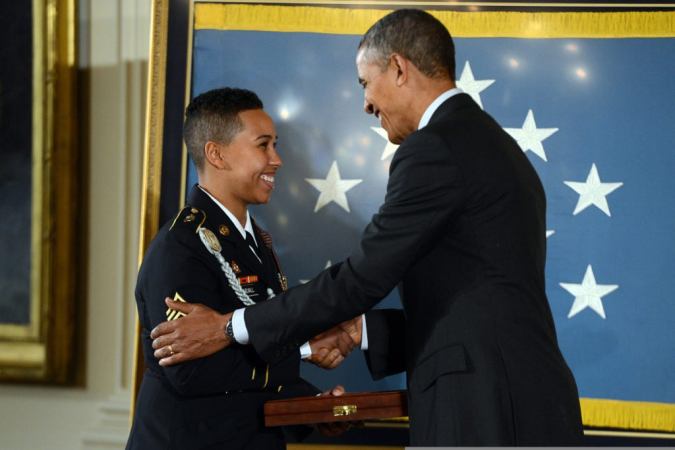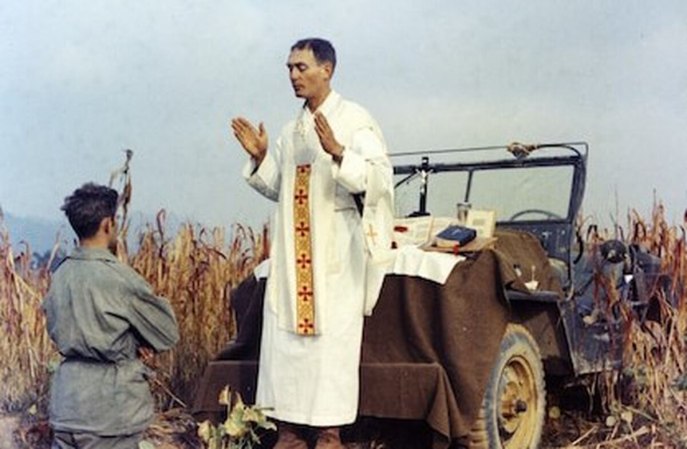When American forces stormed ashore at Saipan on June 15, 1944, they knew they were in for a fight. Saipan was strategically important to both the Americans and the Japanese. It is the largest island in the Marianas chain and close enough to the Japanese mainland for American B-29’s to launch bombing missions.
Though it is often overshadowed by other battles, the battle of Saipan was the most costly operation for the Americans in the Pacific up to that point. 31,000 Japanese stood ready to defend the island from some 71,000 Americans of the 2nd and 4th Marine Divisions and the Army’s 27th Infantry Division.

Through June and into July, American forces made slow but steady progress across the island. Brutal fighting occurred in places that earned names such as “Death Valley” and “Purple Heart Ridge.”
By July 6, the situation was desperate for the Japanese. With the defeat of the Imperial Japanese Navy at the Battle of the Philippine Sea, there was no hope of rescue or reinforcement for the remaining defenders on Saipan.
Gen. Saito, the Japanese commander on Saipan, ordered all remaining defenders, wounded or not, and even civilians on the island to conduct a massive banzai charge against the American positions. “There is no longer any distinction between civilians and troops,” Saito said. “It would be better for them to join in the attack with bamboo spears than to be captured.”
Saito would not join his troops in the attack, though. After transmitting an apology to Tokyo for his failure, he committed ritual suicide.

At 0445 on July 7, 1944, a human wave of Japanese soldiers descended on the positions of the 1st and 2nd Battalions, 105th Infantry Regiment, 27th Infantry Division. It was the largest banzai charge of the Pacific war.
Leading the way were soldiers carrying a massive red flag, followed by sword-wielding officers and the rest of the infantry. Behind them came the wounded and what civilians decided to join the attack. There was an insufficient number of rifles for all, so many wounded came with bamboo spears, rocks, or anything else they hoped could do damage.
As some 4,000 Japanese swarmed over the American lines, intense close quarters combat broke out.
Leading the 1st Battalion was Lt. Col. William O’Brien. Since the first days his unit had landed on Saipan, he had shown his bravery and skill as a commander. O’Brien had personally led several assaults to reduce Japanese strongpoints while continually exposing himself to enemy fire.
When the Japanese came at the 1st Battalion that morning, O’Brien was once again in the thick of the fighting and leading from the front.
As the enemy swept over his lines, O’Brien steadfastly held his ground and rallied his men. Like a modern-day Call of Duty character, he dual-wielded two .45 caliber pistols and shouted encouragement to his men as he blasted the onrushing attackers.
As the attack continued, O’Brien received a painful wound to his shoulder but refused to quit. When his pistol ammunition was exhausted, he picked up a discarded rifle and continued to fight. When he again ran out of ammunition, he manned a .50 caliber machine gun and poured fire into the advancing Japanese.
O’Brien was last seen alive surrounded by sword-wielding Japanese, blasting the .50 caliber machine gun and yelling at his men, “Don’t give them a damn inch!”
Elsewhere on the 1st Battalion line, one Thomas Baker, a private in A Company, was also giving the Japanese hell. Like O’Brien, from the early days of his unit’s involvement on Saipan he had exhibited tremendous bravery in fighting the Japanese.
As the Japanese rushed his position, Baker delivered deadly fire with his rifle. When he was wounded he refused to be evacuated and continued to fight on. With his ammunition exhausted, Baker turned his rifle into club and desperately fought off the Japanese attackers until his weapon was battered beyond use.

At this point, a fellow soldier withdrew him from the line, but in carrying him from the field was himself wounded. Baker refused to be taken any further due to the risk to his friends. He made a simple last request — to be left propped against a tree, facing the Japanese, with a .45 pistol with eight shots.
When friendly forces retook the position in the following days, they discovered Baker’s body, just as they had left it, with eight dead Japanese laying in front of him — each killed with a single shot from his .45.
Further down the line from the 1st Battalion, the 2nd Battalion was having problems of its own. Japanese forces had breached the perimeter and were attacking the battalion aid station just behind the front lines.
Seeing Japanese soldiers bayoneting wounded Americans, the battalion surgeon, Capt. Benjamin Salomon, sprang into action. Salomon, a former infantry soldier and the regimental dental officer, had volunteered to take the original battalion surgeon’s place when he had been wounded. Letting his former infantry training take over, Salomon began to fight back.

As Japanese continued to infiltrate his aid station, Salomon, with the help of wounded soldiers, expertly dispatched them until he realized the situation was untenable. Ordering the wounded to make their way back to the regimental aid station, Salomon joined the defenses and manned a machine gun.
Salomon was later found slumped over the machine gun, his body riddled with bullet and bayonet wounds, with scores of Japanese dead in front of his position. It was later determined that he had been wounded over 20 times and had moved the machine gun four times in order to get a clear field of fire around the bodies before he was overcome.
The battle for Saipan would be declared over two days later. Afterwards, O’Brien, Baker, and Salomon would all be awarded the Medal of Honor.


























